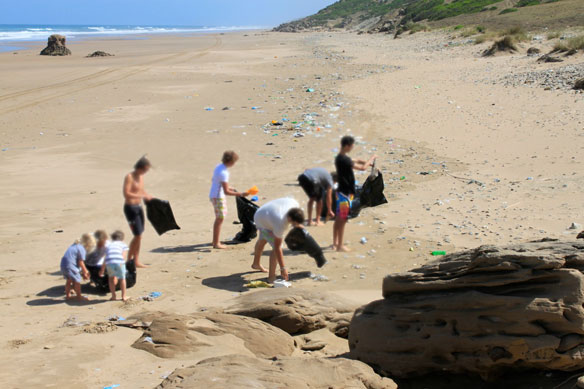
Photograph: © SAF — Coastal Care.
“The unprecedented plastic waste tide plaguing our oceans and shores, can become as limited as our chosen relationship with plastics, which involves a dramatic behavioral change on our part…”— Claire Le Guern, author of “When The Mermaids Cry: The Great Plastic Tide” ©-2009.
Excerpts;
Surfrider released the 2019 Beach Cleanup Report today, confirming that plastic is the most common material found on the beaches and the percentage of microplastics continues to increase. Nine out of the top ten items collected on the beaches were plastic, and 25% of all items collected were plastic fragments smaller than a dime…
Read Full Article, Surfriders News (07-14-2020)
Beach cleanups are missing millions of pieces of plastic; National Geographic (05-16-2019)
In the last decade, beach cleanups have grown into a global phenomenon, with volunteers gathering at regular intervals for the Sisyphean task of cleaning up plastic trash. Now, a new research suggests that beach cleanups can inadvertently mask the full scale of plastic pollution, much of which lies below the sand’s surface…
A running list of action on plastic pollution; National Geographic (10-29-2018)
More than 8. 3 billion tons of plastics made: Most has now been discarded; Science Daily (07-19-2017)
Humans have created 8.3 billion metric tons of plastics since large-scale production of the synthetic materials began in the early 1950s, and most of it now resides in landfills or the natural environment, according to a study.
How plastic waste moves in the environment; Science Daily (11-27-2018)
Plastic Pollution: When The Mermaids Cry, The Great Plastic Tide, Coastal Care
Washed out on our coasts in obvious and clearly visible form, the plastic pollution spectacle blatantly unveiling on our beaches is only the prelude of the greater story that unfolded further away in the world’s oceans, yet mostly originating from where we stand: the land…








